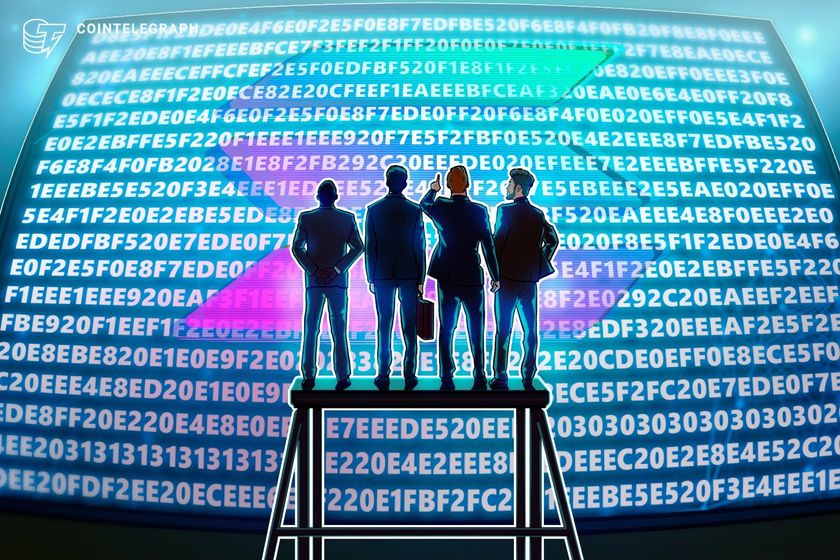The cryptocurrency landscape is buzzing with discussions as the upcoming upgrades to a significant network are raising eyebrows and igniting conversations among investors and enthusiasts alike. As these enhancements are set to roll out, a core concern has emerged: the potential impact on the revenue streams of validators, the backbone of many blockchain ecosystems.
Validators play a crucial role in maintaining the security and functionality of a network by confirming transactions and adding new blocks to the blockchain. With these planned upgrades, questions are surfacing about how adjustments to network protocols might reshape their financial model. Some are worried that these changes could lead to diminished revenues for validators, prompting a wider debate on the sustainability and fairness of the current structure.
“Changes to the network protocols could have unforeseen effects on validator earnings, sparking significant discussions across the community,”
Industry analysts are closely monitoring these developments. The anticipation surrounding the improvements highlights the delicate balance between innovation and the economic realities facing those who maintain the network’s integrity. As the rollout approaches, the crypto community stands at a crossroads, weighing the potential benefits of modernization against the risks to validator compensation.
This debate underscores a pivotal moment in cryptocurrency evolution, where technological advancements must align with the needs and welfare of those who enable the network’s continued operation. As the situation unfolds, stakeholders from all corners of the industry are keeping a watchful eye on how these upgrades will shape the future of validators and the broader cryptocurrency ecosystem.
Debate Over Network Upgrades and Validator Revenues
The upcoming network upgrades are causing a stir, particularly regarding the implications for validators’ revenues. Here are the key points of the discussion:
- Revenue Implications for Validators:
- The proposed upgrades may alter the financial landscape for validators, affecting their income streams.
- Potential changes in reward structures could lead to increased competition among validators.
- Community Concerns:
- Users and stakeholders are worried about how these changes might impact the value of their investments.
- There is a sense of uncertainty regarding whether the upgrades will benefit or hinder the overall ecosystem.
- Technical Aspects of Upgrades:
- The upgrades will introduce changes to the network protocol, aiming for improved efficiency and security.
- These technical advancements may lead to greater long-term stability but require adaptation from validators.
- Broader Impacts on the Ecosystem:
- Changes to validator revenue structures could influence the decentralization of the network.
- Higher barriers to entry for new validators might limit diversity within the validating community.
The outcome of these debates will play a significant role in shaping the future of the network and its participants, urging validators to evaluate their strategies for sustainability.
Debate Arises Over Upcoming Network Upgrades and Validators’ Revenues
The recent plans for network upgrades have ignited discussions across the crypto community, especially regarding the potential impact on validators’ revenues. This move seeks to bolster network efficiency and scalability, a common goal among competitors in the blockchain industry. However, it also raises questions about the balance between enhancing performance and ensuring fair compensation for those pivotal to network security and operation.
While some users view the upgrades as a necessary evolution that could optimize transaction speeds and reduce fees, others worry that the changes might diminish validators’ profitability. This aspect mirrors other projects in the space, such as Ethereum’s shift towards proof of stake, which has similarly sparked controversy over economic models. On one hand, this shift can attract more users eager for a faster, cheaper experience; on the other, it leaves existing validators questioning their revenue streams and long-term viability.
The advancements could be particularly advantageous for newer validators entering the ecosystem, who may benefit from increased network activity and a more significant number of transaction fees to draw from. Conversely, established validators might find themselves in a precarious position if their assumed revenue declines, potentially leading to a concentrated market where only the most competitive remain. This scenario could create a divide between small-time validators and industry giants, stifling diversity in the validator landscape.
This situation can benefit end-users who desire lower fees and faster confirmations, drawing in new participants and increasing overall usage of the network. However, if validators’ fears become reality and ecosystems aren’t sustainable for smaller operators, it could lead to a backlash—deterring existing validators and new entrants from committing to the network, ultimately undermining its goal of decentralization. Overall, stakeholders must navigate these changes carefully, weighing innovation against the need for an equitable ecosystem that rewards all contributors fairly.

















